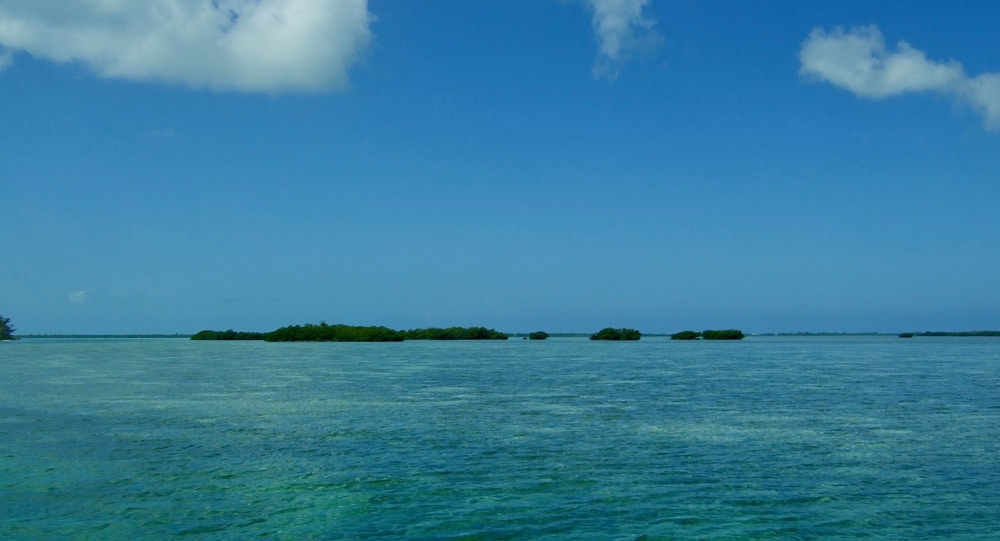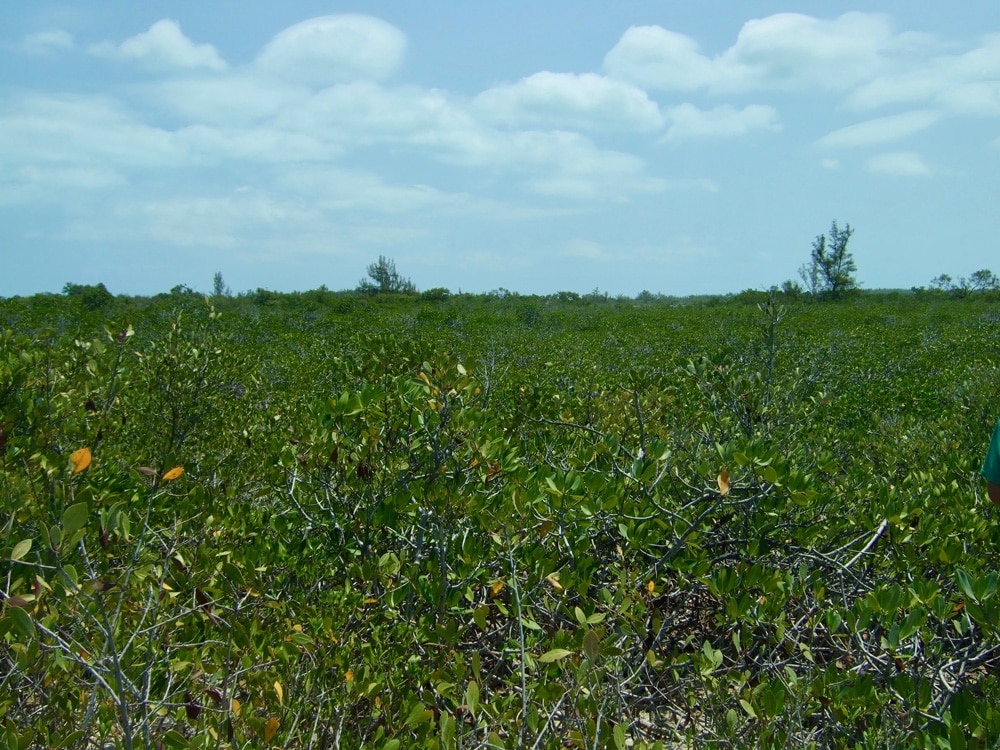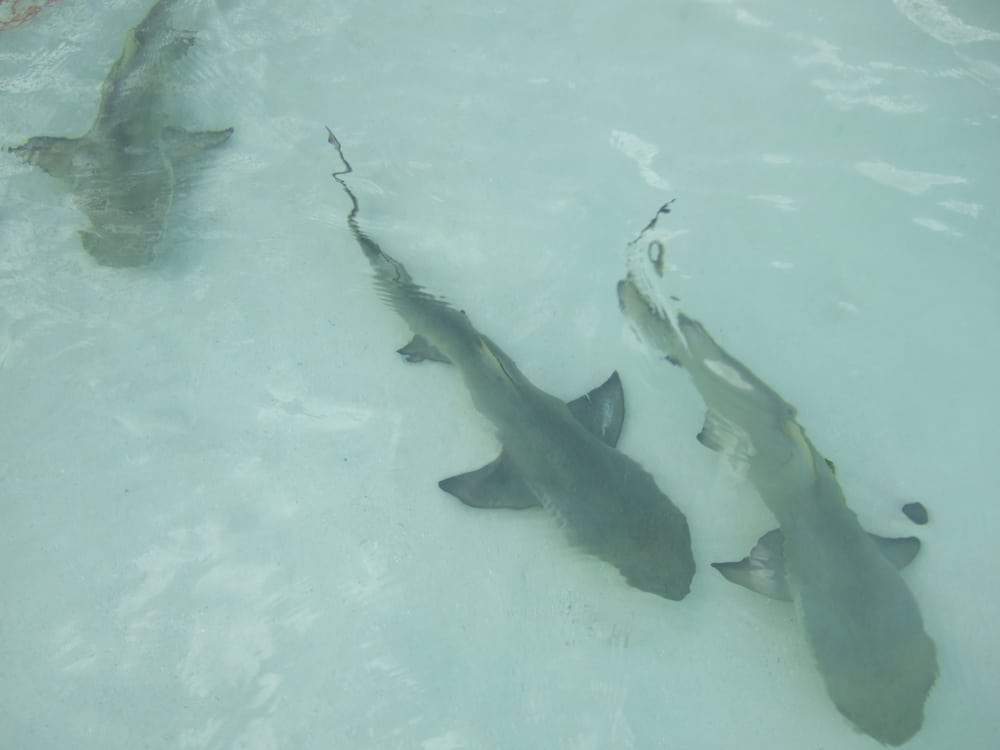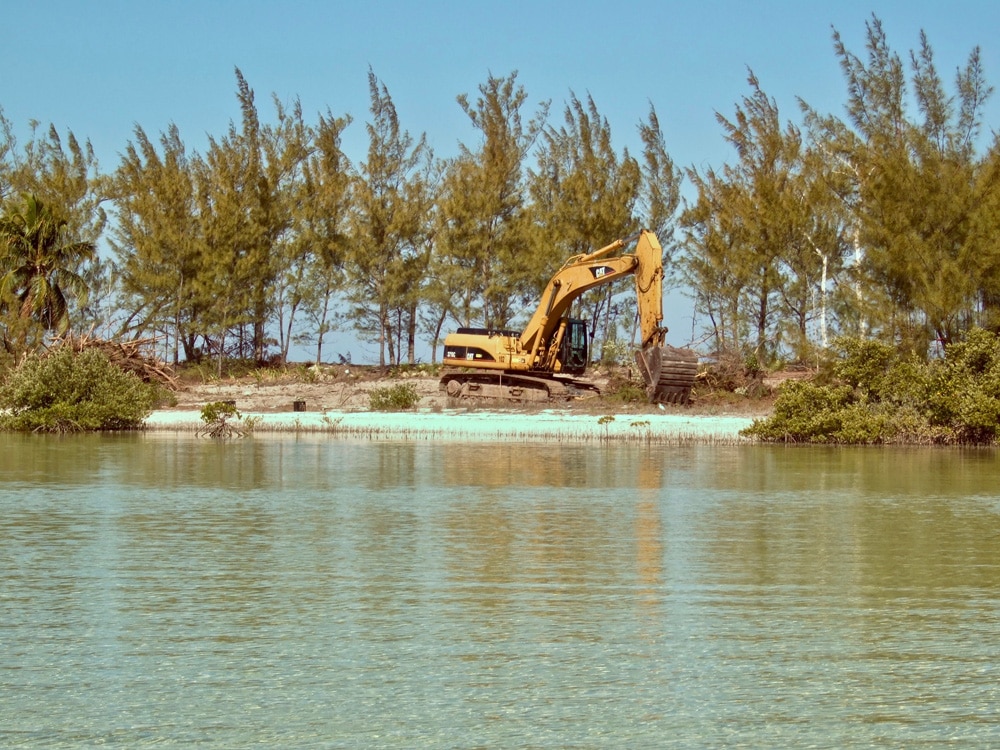Marine Life & Conservation Blogs
Marvellous mangroves!

As divers, I’m guessing most of us love diving on coral reefs; if those reefs are pristine and full of life, even better! Coral reefs are incredible and diverse ecosystems, but they are strongly linked and interdependent on three other ecosystems: seagrasses, mangroves and rivers. Here I’m going to discuss mangroves, and why they are one of the most important ecosystems to conserve in order to have beautiful, healthy coral reefs. Hopefully I can convince every diver to love them as much as I do and to explore our options in protecting these habitats. Though historically, mangroves were viewed as insect filled, tangled and muddy swamps and shrub forests, we have become increasingly aware of how diverse and special this amazing habitat is for both wildlife and protecting our shorelines from extreme weather events.
So, what is a mangrove?
Mangroves are trees and shrubs that love very warm, wet conditions and grow in saline coastal habitats in tropics and subtropics. You have probably seen them fringing islands and coastlines when diving on coral reefs. They can often be recognised by their dense tangle of prop root that make the trees look like they are on stilts. Mangroves are unique because they can live in areas with low oxygen soil and where the water has a variable salt content. As they live in the coastal intertidal zone, the roots can cope with being flooded twice a day. They are flowering plants, where the upper trunk, branches and leaves live above the water line and the lower trunk and roots can live below.
There are over 80 different species of mangrove tree and several more species associated with mangroves for their ability to tolerate the coastal intertidal zone, such as buttonwoods. The Asia-Pacific region has the most diversity and the largest mangrove region in the world is The Great Sundarbans in Bangladesh (a UNESCO World Heritage Site). Having said this, there are three main dominant types of mangroves in a mangrove forest; red, black and white.
Red mangroves are evergreen trees that can grow to 25m, often less. They live closest to the water and elaborate arching prop roots and red bark colour make it very easy to identify. They are salt excluders; the roots contain a waxy substance that helps keep the salt out. If any salt does get through, it is deposited in older leaves and the tree sheds them. They produce propagules (seeds) that grow from the tree, then detach and stick into the mud or float away somewhere new.
Black mangroves live between red and white mangroves. The easily identifiable roots (pneumatophores) stick up vertically from sediment and are specially designed to take in oxygen, acting like snorkels in the water. Black mangroves have longer pointed leaves which are often covered in salt crystals and dark scaly bark. They produce seeds which germinate while still connected to the parent tree, so trees are often grouped together.
White mangroves live closest to the land in the back portion of the mangrove swamps, where they are unaffected by tidal inundation, except on spring tides. With no visible aerial roots, they may seem harder to identify, but the leaves have two glands at the base which excrete the salt taken in by the roots, so the leaves are often coated with white salt crystals. The salt crystals give this species its common name and the bark is lighter in colour.
Why should we love them?
Mangroves are ecosystem engineers, meaning they form their own ecosystem and provide habitats for other species, but they also have lots of benefits to us:
- Trapping sediments
Mangrove forests have huge root systems that slow the movement of tidal waters, making the sediment settle out of the water, the roots then trap this soft sediment and build up the muddy bottom. In dense forests, mangroves have created entire islands.
- Reducing wave action
The network of sediment-trapping roots stabilize the coastline, reducing erosion from wave and tidal action and providing a buffer, an important defence for costal ecosystems and communities from tropical storms and their storm surges.
- Important nursery grounds
Mangroves provide an intricate network of nursery habitat for many fish and invertebrate species, which move out to coral reefs and other ecosystems when they mature. The mangroves provide a safe haven for juvenile fish, including commercially important fisheries species, which seek food and shelter from predators. Many shark species, including lemon sharks, bull sharks and blacktip sharks, spend their juvenile years in mangrove forests.
- Rich biodiverse ecosystems
In addition to being a great habitat for the young of reef and pelagic species, mangroves are a primary habitat for mature individuals of many species of marine animal, amphibians, reptiles, seabirds and waterfowl. Mangroves are always teeming with life!
For anyone who enjoys diving on coral reefs, it is important to be aware that coral reefs and mangroves have a symbiotic relationship – the reefs protect the coast from being eroded by the sea, blocking the power of the open ocean and the mangroves trap the sediment washed from the land that would smother and kill the reef. Species depend on both ecosystems for different life stages and both ecosystems provide coastal protection and commercial value through fish stocks and tourism for us. Mangroves are one of the most valuable ecosystems in the world.
Threats
Unfortunately, like coral reefs, mangrove forests are under threat and are being lost at a very rapid rate. Clear cutting for aquaculture, mainly shrimp farming and coastal developments, such as marinas, housing and hotels is a major issue, as is harvesting for wood.
It is estimated that at least one third of all mangrove forests have been lost in the last few decades. Without protection, they may disappear in areas that cannot afford the ecological or economic loss. This in turn negatively effects our beloved coral reefs, which are already struggling with pollution, sedimentation, climate change, ocean acidification, overfishing and destructive commercial practices. After that thoroughly depressing paragraph, lets move onto the positive bit…
What can we do to help?
- Help support and encourage more protected areas. If you are travelling in an area with a protected area, donate or take a guided tour from rangers.
- Make sustainable choices; shrimp farming is a leading cause of mangrove habitat loss, know where your food is coming from and whether you should be making that choice. If you don’t want to give up a food, there is usually a sustainable option – it may cost a little extra, but it will be completely worth it!
- Spread the word! As ever, education is always important and particularly in countries with mangrove forests; many NGO’s work in schools to educate the next generation, which we can support through donations. However it isn’t just about spreading the word in other countries, the more people everywhere learn about the value of mangrove forests, the more drive there will be to protect this amazing habitat!
Visiting the mangroves
So, if you are now totally hooked on marvellous mangroves and want to go and see the wildlife for yourself, there are now many places that will take you snorkelling or on kayak tours. By picking an organisation that donates to mangrove protection or does educational programmes you get to help out while having a great time!
Marine Life & Conservation Blogs
Creature Feature: Dusky Shark

 In this series, the Shark Trust will be sharing amazing facts about different species of sharks and what you can do to help protect them.
In this series, the Shark Trust will be sharing amazing facts about different species of sharks and what you can do to help protect them.
This month we’re taking a look at the Dusky Shark, a highly migratory species with a particularly slow growth rate and late age at maturity.
Dusky sharks are one of the largest species within the Carcharhinus genus, generally measuring 3 metres total length but able to reach up to 4.2 metres. They are grey to grey-brown on their dorsal side and their fins usually have dusky margins, with the darkest tips on the caudal fin.
Dusky Sharks can often be confused with other species of the Carcharhinus genus, particularly the Galapagos Shark (Carcharhinus galapagensis). They have very similar external morphology, so it can be easier to ID to species level by taking location into account as the two species occupy very different ecological niches – Galapagos Sharks prefer offshore seamounts and islets, whilst duskies prefer continental margins.
Hybridisation:
A 2019 study found that Dusky Sharks are hybridising with Galapagos Sharks on the Eastern Tropical Pacific (Pazmiño et al., 2019). Hybridisation is when an animal breeds with an individual of another species to produce offspring (a hybrid). Hybrids are often infertile, but this study found that the hybrids were able to produce second generation hybrids!
Long distance swimmers:
Dusky sharks are highly mobile species, undertaking long migrations to stay in warm waters throughout the winter. In the Northern Hemisphere, they head towards the poles in the summer and return southwards towards the equator in winter. The longest distance recorded was 2000 nautical miles!
Very slow to mature and reproduce:
The Dusky Shark are both targeted and caught as bycatch globally. We already know that elasmobranchs are inherently slow reproducers which means that they are heavily impacted by overfishing; it takes them so long to recover that they cannot keep up with the rate at which they are being fished. Dusky Sharks are particularly slow to reproduce – females are only ready to start breeding at roughly 20 years old, their gestation periods can last up to 22 months, and they only give birth every two to three years. This makes duskies one of the most vulnerable of all shark species.
The Dusky Shark is now listed on Appendix II of the Convention on the Conservation of Migratory Species (CMS), but further action is required to protect this important species.
Scientific Name: Carcharhinus obscurus
Family: Carcharhinidae
Maximum Size: 420cm (Total Length)
Diet: Bony fishes, cephalopods, can also eat crustaceans, and small sharks, skates and rays
Distribution: Patchy distribution in tropical and warm temperate seas; Atlantic, Indo-Pacific and Mediterranean.
Habitat: Ranges from inshore waters out to the edge of the continental shelf.
Conservation status: Endangered.
For more great shark information and conservation visit the Shark Trust Website
Images: Andy Murch
Diana A. Pazmiño, Lynne van Herderden, Colin A. Simpfendorfer, Claudia Junge, Stephen C. Donnellan, E. Mauricio Hoyos-Padilla, Clinton A.J. Duffy, Charlie Huveneers, Bronwyn M. Gillanders, Paul A. Butcher, Gregory E. Maes. (2019). Introgressive hybridisation between two widespread sharks in the east Pacific region, Molecular Phylogenetics and Evolution 136(119-127), https://doi.org/10.1016/j.ympev.2019.04.013.
Marine Life & Conservation Blogs
Creature Feature: Undulate Ray

 In this series, the Shark Trust will be sharing amazing facts about different species of sharks and what you can do to help protect them.
In this series, the Shark Trust will be sharing amazing facts about different species of sharks and what you can do to help protect them.
This month we’re looking at the Undulate Ray. Easily identified by its beautiful, ornate pattern, the Undulate Ray gets its name from the undulating patterns of lines and spots on its dorsal side.
This skate is usually found on sandy or muddy sea floors, down to about 200 m deep, although it is more commonly found shallower. They can grow up to 90 cm total length. Depending on the size of the individual, their diet can range from shrimps to crabs.
Although sometimes called the Undulate Ray, this is actually a species of skate, meaning that, as all true skates do, they lay eggs. The eggs are contained in keratin eggcases – the same material that our hair and nails are made up of! These eggcases are also commonly called mermaid’s purses and can be found washed up on beaches all around the UK. If you find one, be sure to take a picture and upload your find to the Great Eggcase Hunt – the Shark Trust’s flagship citizen science project.
It is worth noting that on the south coasts, these eggcases can be confused with those of the Spotted Ray, especially as they look very similar and the ranges overlap, so we sometimes informally refer to them as ‘Spundulates’.
Scientific Name: Raja undulata
Family: Rajidae
Maximum Size: 90cm (total length)
Diet: shrimps and crabs
Distribution: found around the eastern Atlantic and in the Mediterranean Sea.
Habitat: shelf waters down to 200m deep.
Conservation Status : As a commercially exploited species, the Undulate Ray is a recovering species in some areas. The good thing is that they have some of the most comprehensive management measures of almost any elasmobranch species, with both minimum and maximum landing sizes as well as a closed season. Additionally, targeting is entirely prohibited in some areas. They are also often caught as bycatch in various fisheries – in some areas they can be landed whilst in others they must be discarded.
IUCN Red List Status: Endangered
For more great shark information and conservation visit the Shark Trust Website
Image Credits: Banner – Sheila Openshaw; Illustration – Marc Dando
-

 News3 months ago
News3 months agoHone your underwater photography skills with Alphamarine Photography at Red Sea Diving Safari in March
-

 News3 months ago
News3 months agoCapturing Critters in Lembeh Underwater Photography Workshop 2024: Event Roundup
-

 Marine Life & Conservation Blogs2 months ago
Marine Life & Conservation Blogs2 months agoCreature Feature: Swell Sharks
-

 Blogs2 months ago
Blogs2 months agoMurex Resorts: Passport to Paradise!
-

 Blogs2 months ago
Blogs2 months agoDiver Discovering Whale Skeletons Beneath Ice Judged World’s Best Underwater Photograph
-

 Gear Reviews3 months ago
Gear Reviews3 months agoGear Review: Oceanic+ Dive Housing for iPhone
-

 Marine Life & Conservation2 months ago
Marine Life & Conservation2 months agoSave the Manatee Club launches brand new webcams at Silver Springs State Park, Florida
-

 Gear Reviews2 weeks ago
Gear Reviews2 weeks agoGEAR REVIEW – Revolutionising Diving Comfort: The Sharkskin T2 Chillproof Suit


























